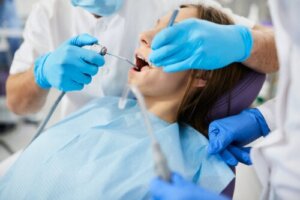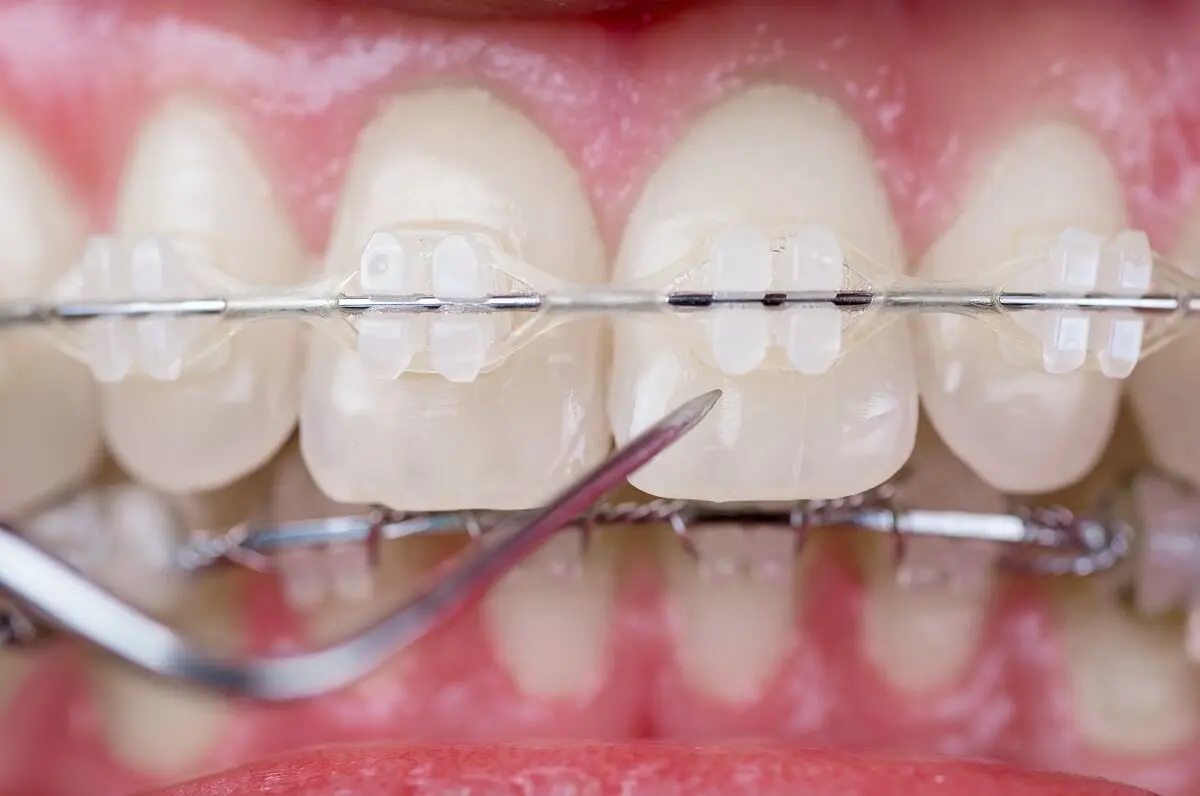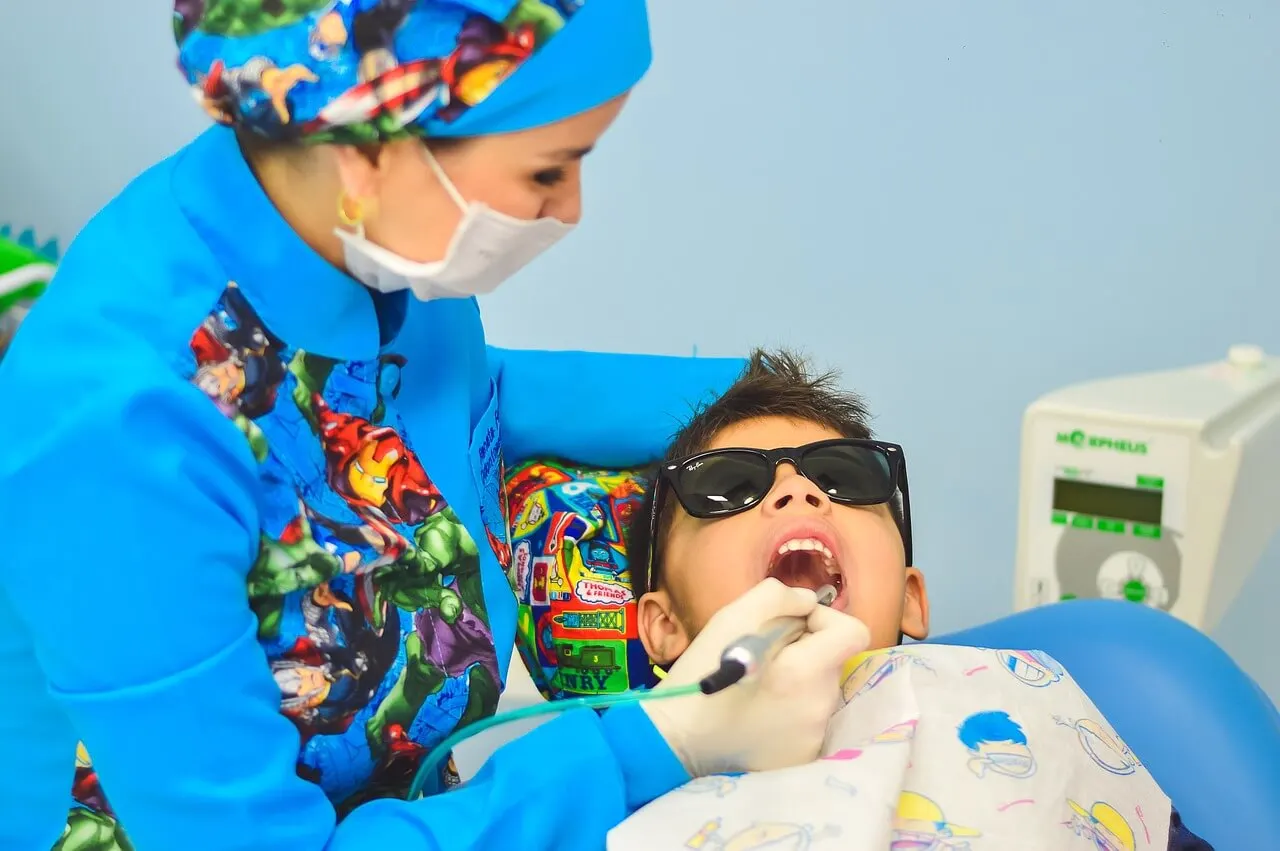Dental Fenestration: What Is It and How Is It Performed?


Written and verified by the dentist Vanesa Evangelina Buffa
Teeth that fail to come out on their own and remain inside the bone are known as “impacted teeth” or a “tooth impaction.” Dental fenestration is a dental treatment that seeks to solve this problem.
The combination of orthodontics and surgery exposes the impacted tooth element. Then, it’s placed in the right place in the mouth.
The upper canines and third molars are the teeth that are most frequently included in the bone. Dental fenestration is a widely used technique, especially to favor the eruption of the front teeth. These teeth are necessary in the mouth for both esthetics and functionality.
In this article, we’ll tell you what dental fenestration is, when it’s necessary, and how it’s performed. Read on and find out more!
What is dental fenestration?
Dental fenestration is a dental procedure performed as part of orthodontic treatment. It’s used to treat cases of impacted teeth, favoring their eruption and repositioning in the mouth.
Impacted teeth are those that have failed to erupt on their own. Therefore, they have been retained inside the bone.
In order that these pieces do not remain in the bone thickness, they can come out and take their place in the mouth, dental fenestration is used. Otherwise, their extraction would be necessary. And as we will tell you later, the preservation of some dental pieces is key in treatments with braces.
Dental fenestration consists of a surgical intervention that removes the bone and mucosa of the included tooth. Through this hole in the gum, the crown of the tooth is exposed and visible.
When the crown of the tooth is visualized and freed, the orthodontist may place a brace on it. In this way, the tooth is tractioned and moved to its corresponding place in the arch.

We think you may also enjoy reading this article: 3 DIY Treatments to Remove Tartar from Your Teeth
When is dental fenestration necessary?
This technique is performed when there are impacted teeth. However, when there are impacted teeth, the intervention will not always be necessary. In some cases, dentists simply choose to extract the tooth instead.
Thus, dental fenestration is performed when the orthodontist considers it pertinent for the rehabilitation of the bite. As we’ve already told you, this intervention is intended so that a piece that’s in the bone reaches the line of gums is located in the place that corresponds to it and fulfills its function in the mouth.
The teeth that present more eruption problems are the third molars or wisdom teeth and upper canines. In general, in wisdom teeth dental fenestration is not performed, unless the case warrants it.
On the other hand, in the case of impacted canines, this is a very necessary practice. It prevents the need to extract the tooth and thus having to resort to rehabilitation options such as prostheses or implants. Dental fenestration makes it possible to preserve the canine and place it in the position it should have reached naturally.
In the event that the tooth isn’t in the upper front of the mouth, it will be the orthodontist who will assess the need for dental fenestration. Sometimes, the case merits conserving and repositioning other teeth, as well; other times, extractions are more convenient.
Dental check-ups and complete X-rays during the period in which teeth are replaced and the canines erupt allow the eruptive process of children to be evaluated. Also, if eruption problems are detected, it will be possible to plan the most convenient interventions in time, thanks to these analyses.
Why is it important for the canine teeth to erupt?
The canines are one of the strongest dental elements of the arch. Their function of tearing and cutting food into smaller pieces gives them a notorious relevance in the process of chewing and swallowing food.
However, they also have a fundamental role in the mouth, the alignment of the arch, and the physiognomy of the face. They guide the positioning of the other teeth, maintain the continuity of the dental arches, and preserve the shape of our lips.
In addition, the canines are involved in the lateral movements of the mouth. Their presence favors that, when moving the mandible sideways, the rest of the teeth do not contact. This action protects the temporomandibular joint and prevents temporomandibular joint dysfunction.
People who lack canines have altered mouths, bites, eating and speaking. They can also suffer consequences in facial esthetics and joint health.
For this reason, avoiding the extraction of an included canine is usually one of the basic premises in orthodontics. Meanwhile, dental fenestration is the ideal therapy to keep the tooth in the mouth.
Adult canines usually erupt at around 12 or 13 years of age. However, as we said, it’s advisable to follow up the eruption process radiographically to check that the child has all the teeth and that there are no obstacles to their growth.
Like this article? You may also like to read: 9 Natural and Effective Tips for Taking Care of Your Teeth
How is dental fenestration performed?
Dental fenestration involves a surgical procedure through which the crown of the included tooth is exposed. Then, the orthodontist will have access to place a brace and traction the tooth to make sure it grows in the desired position.
Prior to this, an adequate study of the clinical case is necessary. Radiographic, clinical, photographic and model examinations will allow the therapy to be planned according to the particularities and needs of each patient.
Once the diagnosis has been made and the need for dental fenestration has been determined, the orthodontist will put the patient in contact with the dentist-surgeon, who will perform the intervention. Given the complexity of the situation, it’s always a good idea to have a multidisciplinary approach to solve this problem.
The first moment of the surgery consists of the fenestration itself. This involves opening a window in the gum and removing the bone and mucosa that surrounds the crown of the impacted element and hinders its exit. In this way, the crown of the impacted tooth is uncovered.
The surgical technique to be used varies according to the particularities of each case. However, you should know that the procedure is performed in a dental office, on an outpatient basis, and under local anesthesia. Also, it’s doesn’t usually take more than half an hour.
At the time of treatment, the orthodontist can place an orthodontic attachment to the tooth. This is attached to a cable or ligature chain that will serve to activate the traction in the mobilization stage of the tooth.
Other cases require waiting for the mucosa to heal. Once the stitches are removed and the tissues have recovered, the brace is placed on the exposed and visible dental crown. Traction movements are then started to reposition the element.
Through the forces of the appliance, progressive traction is exerted on the tooth so that it takes its place in the dental arch. In many cases, it’s necessary to create sufficient space through the use of braces prior to surgery.

Aftercare and checkups
In general, the postoperative period does not generate facial edema or complications. It will be necessary to take a soft diet for 2 or 3 days and take anti-inflammatory drugs if the surgeon considers it appropriate.
If stitches are placed, they will have to be removed after a week. At that time, the tissues will be ready for orthodontic treatment to begin.
Regular check-ups are unavoidable regardless of when the braces are placed. This makes it possible to detect and precisely correct excessive movements, bleeding of the soft tissues or unwanted deviations.
The application of the appropriate forces in intensity and direction will help the piece to be placed in the correct position. This is also a great way to avoid damage to the teeth and neighboring anatomical structures.
Dental fenestration as a complement to orthodontics
Fenestration is a dental treatment that allows the included dental pieces to make their way and relocate in the arch. It’s a great way to help any teeth that have not been able to erupt on their own need to remain in the mouth and in place.
Although it’s a simple surgical procedure, it’s always part of a larger orthodontic treatment that encompasses it. Therefore, dental fenestration is just one more step in a longer and more complex therapeutic path. It’s a step that seeks to achieve a harmonious bite and proper dental posture.
The teamwork of the surgeon and the orthodontist is essential for the success of the treatment. The same is true for an adequate study of the case and the careful planning of the entire therapeutic process.
All cited sources were thoroughly reviewed by our team to ensure their quality, reliability, currency, and validity. The bibliography of this article was considered reliable and of academic or scientific accuracy.
- Guirola Rodríguez, I. (2022). Caninos incluidos. Actualización de su manejo en la atención primaria de salud.
- Gutiérrez Palacios, P. (2020). Tratamiento ortodoncico-quirúrgico de caninos incluidos maxilares mediante tracción (técnica abierta vs técnica cerrada).
- Tejada Alegre, J. E. (2021). Intervención temprana de caninos ectópicos con aparatología ortodóntica fija.
- Pedroso, J. R., Bervian, R. K., Rosin, M., Boffo, B. S., Cavazzini, A., Pezzini, R. P., … & Dos Santos, E. B. (2022). Guia canina-importância clínica. Research, Society and Development, 11(1), e29911125058-e29911125058.
- Muñoz Rodríguez, M. S. (2019). Importancia del canino en la oclusión y posibles tratamientos ante su ausencia en el arco dental.
- Suarez Gargate, J. (2018). PREVALENCIA DE PIEZAS DENTARIAS RETENIDAS EN PACIENTES DE 15 A 60 AÑOS ATENDIDOS EN EL CENTRO RADIOLOGICO CERO HUÁNUCO 2017.
- Rodríguez Roca, A. I. (2018). Efectividad de procedimientos quirúrgicos-ortodónticos en pacientes con canino incluido (Bachelor’s thesis, Universidad de Guayaquil. Facultad Piloto de Odontología).
- Cáliz, F. F., Moya, B. G., & Martínez-González, J. M. (2019). Tratamiento quirúrgico-ortodóncico de los dientes retenidos. Otras posibilidades terapéuticas. Donado. Cirugía bucal: Patología y técnica, 245.
- Sowmya Mohan Kumar, D., Gnanashanmugam, D., MS, K., & Kumar, S. M. Methods Of Surgical Exposure Of Impacted Canine–A Review. European Journal of Molecular & Clinical Medicine, 7(08), 2020.
This text is provided for informational purposes only and does not replace consultation with a professional. If in doubt, consult your specialist.








